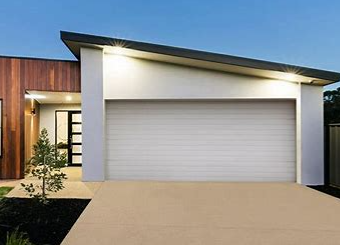
Are you in the process of building a new home or considering a roof replacement for your existing one? One of the critical decisions you’ll need to make is what type of roofing system to install. Among the myriad of options available, flat or low slope roofing stands out as a popular choice for modern homes and buildings. However, deciding between the two can be challenging without a clear understanding of their differences and benefits. In this guide, we’ll delve into the intricacies of flat and low slope roofing to help you make an informed decision, with insight on finding the right roofing contractor to execute your vision.
Understanding Flat Roofing
Flat roofing, as the name suggests, is characterized by its minimal slope, often with a pitch of 10 degrees or less. This type of roofing is commonly found in commercial buildings, modern residential homes, and extensions. Flat roofs offer a sleek, contemporary aesthetic and can be used as functional spaces for rooftop gardens, solar panel installations, or outdoor living areas.
Flat roofing materials typically include:
- Built-Up Roofing (BUR): Consisting of multiple layers of bitumen and reinforcing fabrics like fiberglass or polyester, BUR is a durable and time-tested option for flat roofs.
- Single-Ply Membrane: Materials such as EPDM (ethylene propylene diene terpolymer), TPO (thermoplastic polyolefin), and PVC (polyvinyl chloride) offer lightweight, flexible, and weather-resistant solutions for flat roofs.
- Modified Bitumen: This asphalt-based material is reinforced with polyester or fiberglass and installed in multiple layers, providing excellent waterproofing and flexibility.
The Advantages of Flat Roofing
- Cost-Effective: Flat roofing systems are often more affordable to install compared to traditional pitched roofs, making them an attractive option for budget-conscious homeowners.
- Space Utilization: The flat surface of these roofs allows for the creation of usable outdoor spaces or the installation of amenities such as HVAC units, solar panels, or green roofs.
- Ease of Maintenance: With fewer angles and slopes, flat roofs are easier to inspect and maintain, reducing long-term upkeep costs.
Exploring Low Slope Roofing
While flat roofs have minimal or no pitch, low slope roofs have a slight incline, typically ranging from 1/4:12 to 2:12. Low slope roofing is commonly found in residential properties and offers a middle ground between flat and steeply pitched roofs. This roofing style provides effective water drainage while still allowing for the installation of certain amenities.
Materials commonly used for low slope roofing include:
- Asphalt Shingles: While traditionally associated with steeply pitched roofs, asphalt shingles can also be used on low slope roofs with the appropriate underlayment and installation techniques.
- Metal Roofing: Metal roofing systems, such as standing seam or corrugated panels, are versatile options for low slope roofs, offering durability, longevity, and a modern aesthetic.
- Synthetic Membranes: Similar to those used in flat roofing, single-ply membranes like TPO and PVC are suitable for low slope applications, providing excellent waterproofing and weather resistance.
The Benefits of Low Slope Roofing
- Aesthetic Versatility: Low slope roofs can accommodate a variety of roofing materials, allowing homeowners to achieve their desired aesthetic while maintaining adequate drainage.
- Improved Drainage: The slight slope of low slope roofs facilitates water runoff, reducing the risk of ponding and water damage.
- Enhanced Durability: Materials chosen for low slope roofing systems are often highly durable and resistant to weathering, extending the lifespan of the roof.
Choosing the Right Roofing Contractor
Regardless of whether you opt for flat or low slope roofing, selecting the right roofing contractor is paramount to the success of your project. When choosing a roofing contractor, consider the following factors:
- Experience and Expertise: Look for contractors with a proven track record in installing flat or low slope roofing systems. Experience matters when it comes to ensuring quality workmanship and adherence to industry standards.
- Licensing and Insurance: Verify that the contractor holds the necessary licenses and insurance coverage to operate in your area. This protects you from liability in case of accidents or property damage during the project.
- References and Reviews: Ask for references from past clients and check online reviews to gauge the contractor’s reputation and reliability.
In Conclusion
Whether you opt for flat or low slope roofing for your new home or roof replacement project, careful consideration of the benefits and requirements of each option is essential. By understanding the differences between flat and low slope roofing systems and selecting a reputable roofing contractor, you can ensure a durable, weather-resistant roof that enhances the aesthetics and functionality of your property for years to come.
